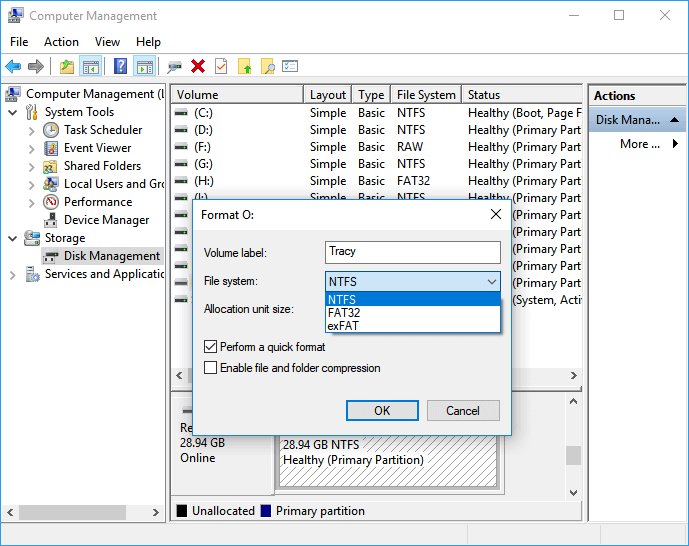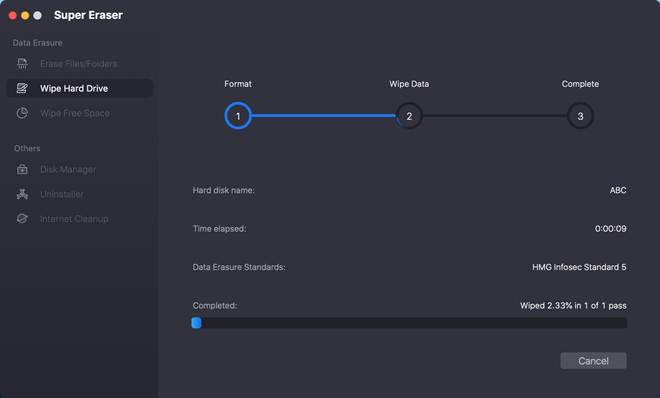


- FORMAT A USB FOR NTFS IN MAC HOW TO
- FORMAT A USB FOR NTFS IN MAC INSTALL
- FORMAT A USB FOR NTFS IN MAC WINDOWS 10
- FORMAT A USB FOR NTFS IN MAC PC
- FORMAT A USB FOR NTFS IN MAC MAC
When your SD card becomes RAW, you will not able to format. Write protection is a physical mechanism. In the new window, you’re required to select your formatted SD card to scan.
FORMAT A USB FOR NTFS IN MAC HOW TO
3 Step Solutions How to Fix Windows Was Unable to Complete the Format of USB Pen Drive рџ‘ЌNote : This process can be work for you and can be not рџ‘ЌDownload AO. Step 2: Right-click on the SD card and select Format from context menu to open formatting options. Here is the guide to force format with cmd when Windows cannot format hard drive conventionally. All the files remain intact and I can still copy/paste files to and from the card, but it immediately goes back to the same number of files/folders after I eject and put it back in. As you are unable to modify, delete the photos, videos on the SD card if it’s write-protected or locked. You may face situations when your SD card won’t format and give unexpected errors, such as, вЂWindows was unable to complete the format SD card.However, sometimes when we carry out formatting on a removable disk, Windows gives us a prompt saying "Windows was unable to complete the format", just as shown in the figure below.You can try a formatting application as well to format your SD card.Select file system that you want to format SD card with. Enter cmd prompt in the search bar of the taskbar and run it as an administrator.
FORMAT A USB FOR NTFS IN MAC INSTALL
In any case, if you want to install apps to an SD card or another alternative drive in Windows 10, then you'll want to.
FORMAT A USB FOR NTFS IN MAC PC
Then I insert it to pc using card reader.
FORMAT A USB FOR NTFS IN MAC WINDOWS 10
Connect the reader to the Windows 10 computer if it is an external SD card reader. In the Disk Management window, locate the Micro SD icon (Removable storage). Reset file system and drive letter of the SD card, click OK to confirm the format action. ’ Sometimes Windows may give a wrong volume letter to an SD card, causing it unable to format. Insert the Micro SD card, On your PC’s desktop window, right-click on the Start icon and then select Disk Management.The detailed steps to format SanDisk Micro SD card are given below: 1.So just put it in shutdown mode and try formatting again. To format your SD card using File Explorer please follow these steps.Find the Format SD card/Erase SD card button and then click on it. SD card is a kind of memory card and it is widely used on various digital devices such as cellphone, digital camera, tablets, etc. Follow the instruction (I chose FAT32), but please do NOT chose Quick Format. Formatting your SD card before use is a critical step.If it didn't work and the "Windows was unable to complete the format SD card" window pops up, go to the next step. When you do, right-click and then click Format. Solutions to SD card not formatted and “unable to format SD card” Reasons Windows was unable to complete the formatting of a USB drive or SD card. You’ll now be able to save large files with no problem.Unable to format sd card windows 10 Usually, the default file system format is FAT32 in Windows and newer systems. Format the disk using the exFAT file-system.
FORMAT A USB FOR NTFS IN MAC MAC
Go to your drive options (in Mac this is the Disk Utility and in Windows this is Disk Management).Insert the USB stick into your PC or Mac.Note that in the instructions below I recommend using the exFAT file-system as this is the most widely supported file-system that supports large files at this time (NTFS isn’t as widely supported): Before following the instructions below be aware that your existing files on the USB drive will likely be erased during the formatting.

The trick to storing large files on a flash-drive is to format the drive using a file-system that accepts large files. How to store files larger than 4GB on a USB Drive The problem with older FAT versions however is that the maximum single file-size is 4GB or lower (depending on the version of FAT used). The reason that USB flash-drives are typically formatted using one of these FAT file-systems is that the format is widely supported and robust (PC, Mac and Linux all support FAT). There are numerous variants of the FAT file-systems from the past including FAT, FAT12, FAT16, FAT16B and FAT32. Usually, flash drives are pre-formatted using an older FAT file-system version. Why the too large for the destination file system error occurs Fortunately it’s a really simple issue to resolve. If trying to save a large file to a USB memory stick a message like the file ‘example.zip’ is too large for the destination file system will show. over 4GB in size), it isn’t, by default, possible to save these large files.


 0 kommentar(er)
0 kommentar(er)
